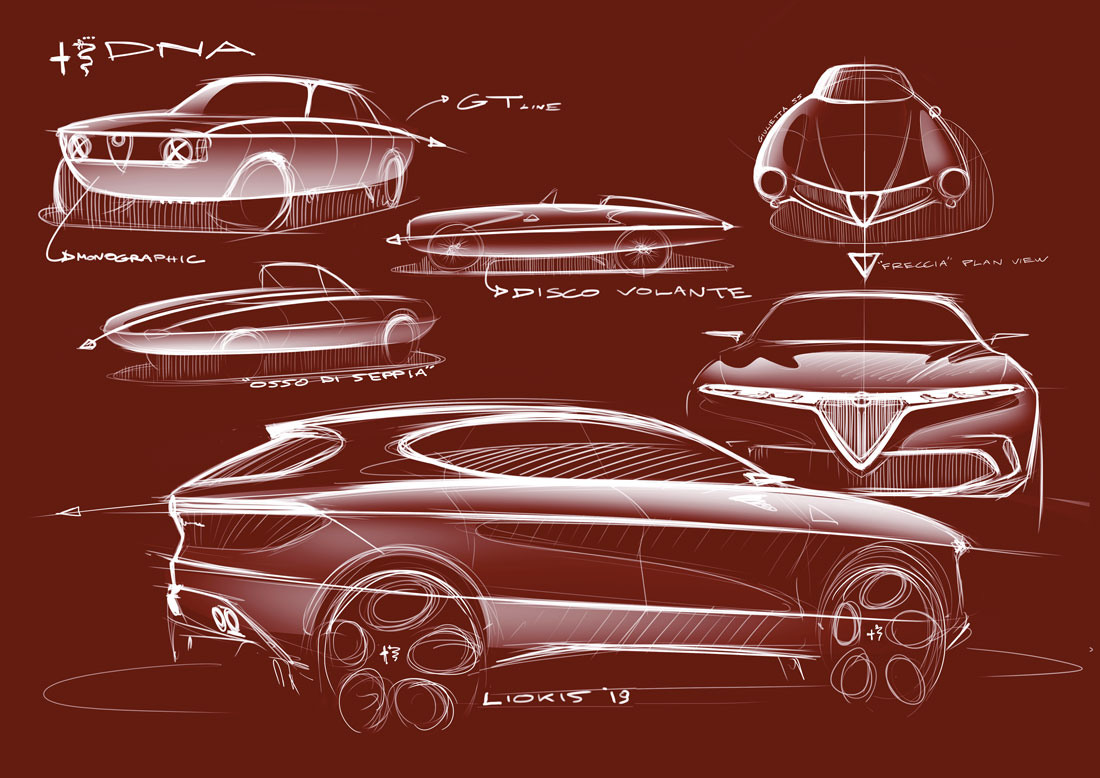There were almost no exceptions. One was the Franklin whose engine was air-cooled, but the rest of its drive-train conventional. Cords and Ruxtons had front-wheel drive, but their motors were water-cooled. The brands mentioned here had an almost invisible share of the American market.
But during the late 1950s sales of Volkswagen Beetles with rear-mounted air-cooled motors were surging to the point that the Detroit Big Three carmakers decided that they had to react in order to preserve or even recover market share. Ford and Chrysler introduced "compact" (smaller than U.S. standard size) cars for the 1960 model year.
General Motors also introduced a compact car, the Chevrolet Corvair. The Corvair defied the existing convention by following VW, its motor being rear-mounted, air-cooled and with a flat (six opposed cylinders) layout. The Corvair was praised in the automotive press for finally! showing some innovation. And the cars sold reasonably well at first.
But cars with rear-mounted motors have a potentially serious flaw: At speed and due to icy roads or driver-induced maneuvering, the heavier rear will tend to rotate the car so as to lead in the direction of the car's trajectory. That is, the car will do a half-spin so as to travel rear-end forwards.
Rear-engine VWs would do that, even a mid-engine car such as a Porsche 914 would -- I know about both through personal experience. Over much time, Porsche engineers have been able to minimize this tendency, though they cannot easily overcome basic physics.
The link above tells of the crusade by lawyer Ralph Nader against the Corvair, calling it unsafe due to the rear-mounted motor and characteristics of the rear suspension system. This accusation drove sales drastically downwards, the car affected being the second-generation Corvair introduced for 1965.
In this post, I deal with styling of the 1965 Corvair.
I'll mostly focus on the coupé version of the Corvair. To start setting the scene, above is a 1960 Corvair Monza Coupe (Mecum Auctions photo). It has a short passenger compartment with a cramped rear seat (as I also know from experience). The area abaft of the greenhouse is long in order to house the motor and related components.
A smaller, but analogous car is the 1961 VW Karmann-Ghia 34. Its proportions are similar to the '60 Corvair's.
Proportions of the redesigned 1965 Corvair coupe shown in this "for sale" photo are again similar. Note the aft point of the greenhouses in relation to the rear wheels. Clearly, engineering considerations dominated the body "packages" and the resulting styling. Even so, the '65 Corvair had a proportionally shorter aft zone, and so is a better balanced design.
Two Hyman Ltd. photos of a 1965 Corvair Corsa Coupe. Styling is consistent with General Motors practice at that time during the Bill Mitchell design supremo era. Pleasant looking with no obvious major flaws. Impressive, actually, considering the need to deal with a rear-engine layout.
There were convertible 1965 Corvairs, this one listed for sale.
And there were four-door hardtop Corvairs as seen in this and the following "for sale" images. Here GM engineers and stylists were able to achieve proportions not far from those of conventional, front-engine designs.
Note how subtly the air-cooling intakes are blended with the backlight. The near-microscopic C-pillar sail panel helps to achieve a conventional, for 1965, appearance.
Here is a 1960 Corvair sedan seen from a similar angle. Its design was established about the time Harley Earl was retiring as GM design vice-president. It probably didn't have much Earl influence, as features such as the wraparound backlight reflect standard 1959 GM sedan designs created in reaction to preliminary work incorporating Earl's ideas.



















































